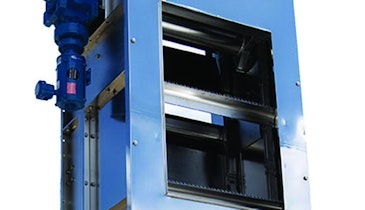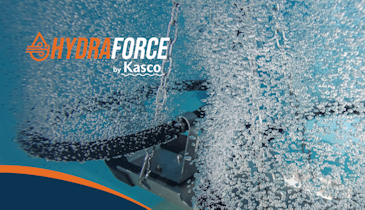Interested in Pumps?
Get Pumps articles, news and videos right in your inbox! Sign up now.
Pumps + Get AlertsWhen treating water or wastewater, often two types of chemical metering/dosing pumps are considered. The chemical feed unit must be able to measure the precise amounts of chemical to meet, but not exceed, chemical demand.
This poses the question of which is most effective and reliable: a diaphragm pump or a peristaltic pump. Both are positive-displacement pumps but work in very different ways.
The diaphragm pump can appear more cost-effective than the peristaltic pump but it has its challenges. The diaphragm has a pumping cycle that consists of a suction and discharge phase. This intermittent pumping of chemicals, specifically during the suction phase of the cycle, can cause gas buildup. This buildup of gases can cause vapor lock and the pump may lose prime.
Diaphragm pumps have check valves in the suction and discharge ends of the pump head. If either set of check valves becomes fouled, the pump will not meter chemical accurately, if at all. Loss of prime may occur. Diaphragm pumps can also create shear stress on fluids, particularly if the pump employs a high velocity stroke action.
Fluids containing particulates and gas-forming chemicals can foul heads and valves.
Routine maintenance procedures must be performed, in particular the cleaning of check valves and inspection of diaphragms.
With peristaltic pumps, fluid is pumped through a flexible tube. Rollers are attached to a rotor that is controlled by a motor. As the rotor turns, the rollers pinch the tubing to force the fluid through. When the tube is not compressed, the fluid flow is brought into the tube. The gentle squeezing action of the valve-less peristaltic pump head design results in near continuous injection of chemical.
As a result, pump tubes are subject to wear and routine maintenance is required, consisting of changing pump tubes at regular intervals throughout the pump’s lifespan. Peristaltic metering pumps excel at pumping fluids that contain particulate matter into lower pressure systems because there are no valves to clog. In addition, the gentle forces created during the peristaltic pumping action will not damage delicate fluids within the tube.
Peristaltic pumps are also extremely effective when pumping gas-forming fluids, such as sodium hypochlorite. Whereas diaphragm pumps tend to lose their prime and fail when gasses build up in the pump head, peristaltic pumps are capable of pumping both fluid and gas and will not lose prime.
It is important to find the right pump for your application and calling upon a company that offers both types of pumping units will help to ensure you get the best nonbiased answers.
Visit the Blue-White Industries Storefront






